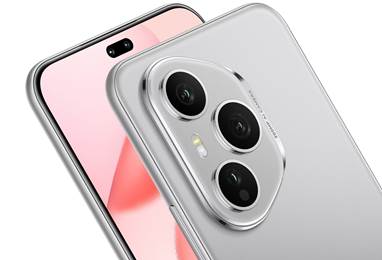microG
is an open-source framework designed to replace Google Mobile Services (GMS),
enabling Android devices — including Huawei smartphones — to access apps that
normally depend on Google’s background infrastructure. It re-creates the
essential components of GMS, such as account syncing, push notifications, and
location services, all while staying lightweight and privacy-focused. For
Huawei users, microG provides a smooth, reliable way to run Google-dependent
applications directly through HarmonyOS or EMUI without needing proprietary
services. It bridges functionality, flexibility, and security, giving Huawei
users access to familiar apps while keeping their system optimized and
efficient.

Understanding
the Core Structure of microG
The Purpose and
Function of microG
The
purpose of microG is to reproduce the key functionalities of Google’s framework
in an open, transparent way. It enables apps that rely on Google Play Services
to operate normally without requiring Google’s closed-source systems. microG
achieves this through modular architecture. Components such as GmsCore (Google
Play Services Core), GsfProxy (Google Services Framework Proxy), and UnifiedNlp
(Network Location Provider) collectively deliver the expected APIs that apps
need. For Huawei, this means that applications like Maps, Drive, and Gmail can
function normally within HarmonyOS. microG’s lightweight design ensures minimal
background load while keeping communication fast and efficient, making it
perfectly suited for Huawei’s system performance goals.
Components
That Make microG Operate
Each
microG module performs a specific function, ensuring complete service coverage:
l GmsCore: Handles most
app communications, including cloud messaging, authentication, and API access.
l GsfProxy: Manages device
registration and synchronizes app data using Huawei’s built-in network
frameworks.
l UnifiedNlp: Provides
network-based location detection, using Wi-Fi and cell tower signals for
precision.
l FakeStore: Recreates the
Play Store interface to help apps verify dependencies safely.
Together,
these modules allow Huawei devices to replicate Google’s functionality without
altering system files or compromising security. This modular system ensures
microG integrates naturally within Huawei’s protected environment.
Open-Source
Verification and Security
One
of the reasons microG is trusted globally is its open-source structure. Its
codebase is publicly accessible, meaning developers and cybersecurity experts
can review, test, and verify it for transparency. Unlike closed-source systems,
users know exactly how microG handles their data and connections. Huawei’s
HarmonyOS enhances this security further. Each microG module operates in a
sandboxed environment, isolated from other apps. This structure prevents data
leaks or unauthorized access while still allowing smooth communication between
microG and user-installed applications. This collaboration between open-source
transparency and Huawei’s security architecture builds a strong layer of
protection and reliability for every user.
How microG
Works on Huawei Devices?
Installing and
Activating microG on Huawei
Huawei
users can install microG through verified open-source platforms like F-Droid or
the official microG website. Once installed, the user opens the “microG
Settings” app to perform an initial setup. This setup includes enabling core
features such as “Device Registration,” “Cloud Messaging,” and “Location
Service.” Huawei’s app permission manager then prompts the user to grant
necessary access — like network and account permissions. Once activated, microG
integrates into the system, registering itself as the service provider for apps
that depend on GMS. HarmonyOS immediately recognizes microG as a compatible
framework. It allocates background resources intelligently, ensuring that
notifications, syncing, and app updates occur smoothly. This installation
process takes only minutes and runs entirely within Huawei’s security
boundaries.
Authentication
and Account Synchronization
After
installation, microG allows Huawei users to log in to their Google accounts
securely. The framework uses token-based authentication rather than storing raw
credentials, ensuring full compliance with data safety standards. When a user
signs in, microG communicates with Google servers to generate encrypted session
tokens. These tokens are then managed locally by Huawei’s KeyStore — a
hardware-backed security layer that prevents unauthorized access. Once
authenticated, apps like Gmail, YouTube, and Drive automatically recognize the
account and sync data normally. This synchronization happens through Huawei’s
adaptive background engine, which intelligently schedules updates based on
system load. The result is real-time data synchronization that feels just as
seamless as on traditional Android devices, with the added reliability of
Huawei’s AI-driven resource management.
microG’s Role in
Notifications, Maps, and App Compatibility
microG
enables services such as push notifications, location tracking, and app
integration.
l Push Notifications:
microG’s Cloud Messaging replicates Google’s Firebase Cloud Messaging system.
Apps using FCM can send notifications directly through microG, and HarmonyOS
ensures these appear instantly on the device.
l Maps and Location:
Through UnifiedNlp, microG connects with location backends like Mozilla
Location Service to provide accurate positioning. Huawei’s GPS engine
complements this service to enhance precision.
l App Compatibility: Most
apps that rely on Google APIs recognize microG as a valid replacement. Whether
accessing calendar sync, video playback, or real-time tracking, Huawei devices
process these functions flawlessly through HarmonyOS’s adaptive interface.
With
this integration, microG essentially serves as the invisible engine that brings
complete Google-dependent functionality to Huawei users — efficiently and
securely.

Conclusion
microG
serves as a powerful bridge between Huawei’s HarmonyOS and apps built for
Google Mobile Services. It reconstructs essential APIs through open-source
technology, enabling features like notifications, account syncing, and cloud
storage without limitations. Huawei’s system enhances this framework by
providing secure sandboxes, intelligent power management, and seamless UI
integration. Every process — from login to real-time app updates — operates
safely and efficiently. Together, they deliver the perfect balance of
flexibility and reliability. The combination of Huawei’s hardware innovation
and the microg huawei framework empowers users with a complete, trustworthy, and
high-performing mobile experience.
